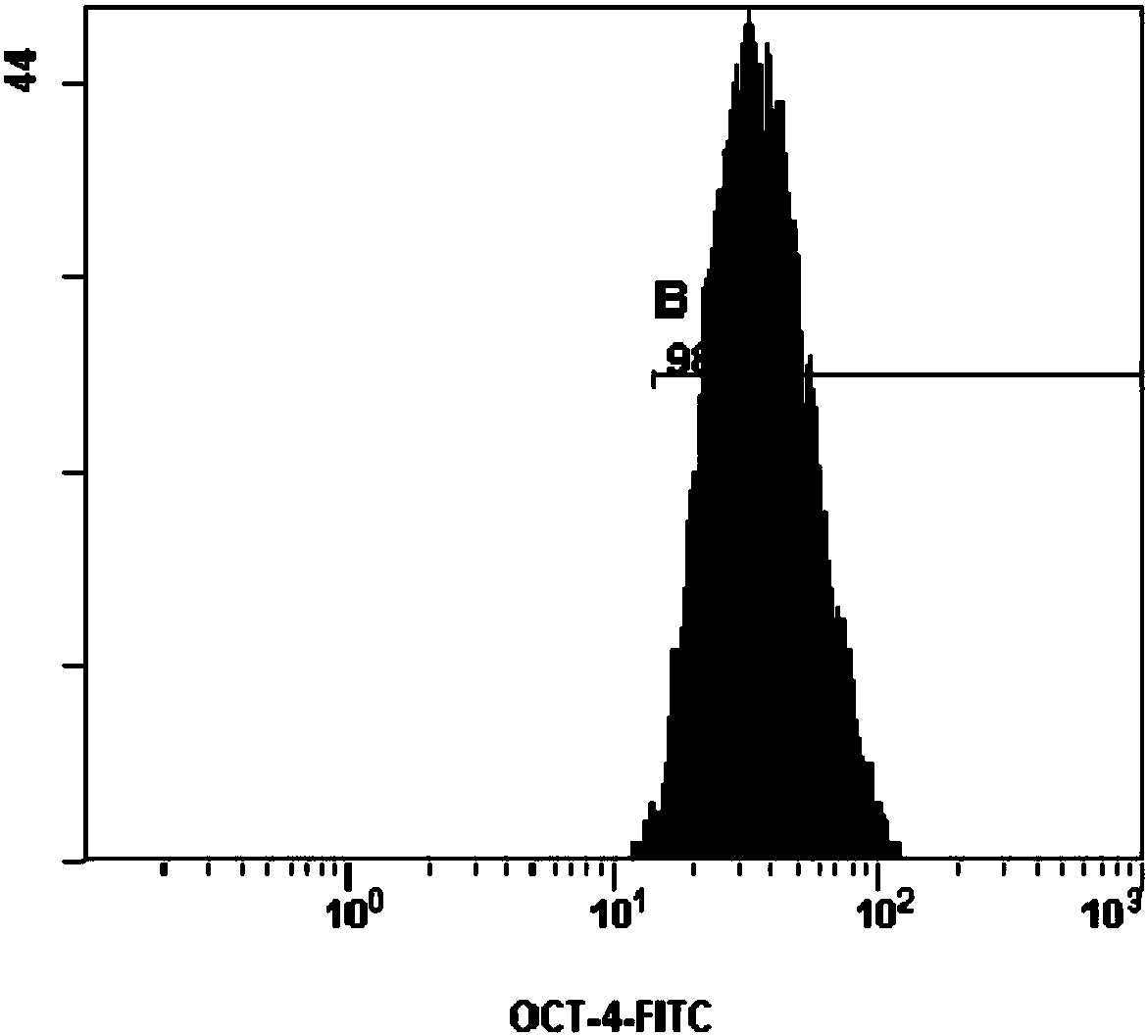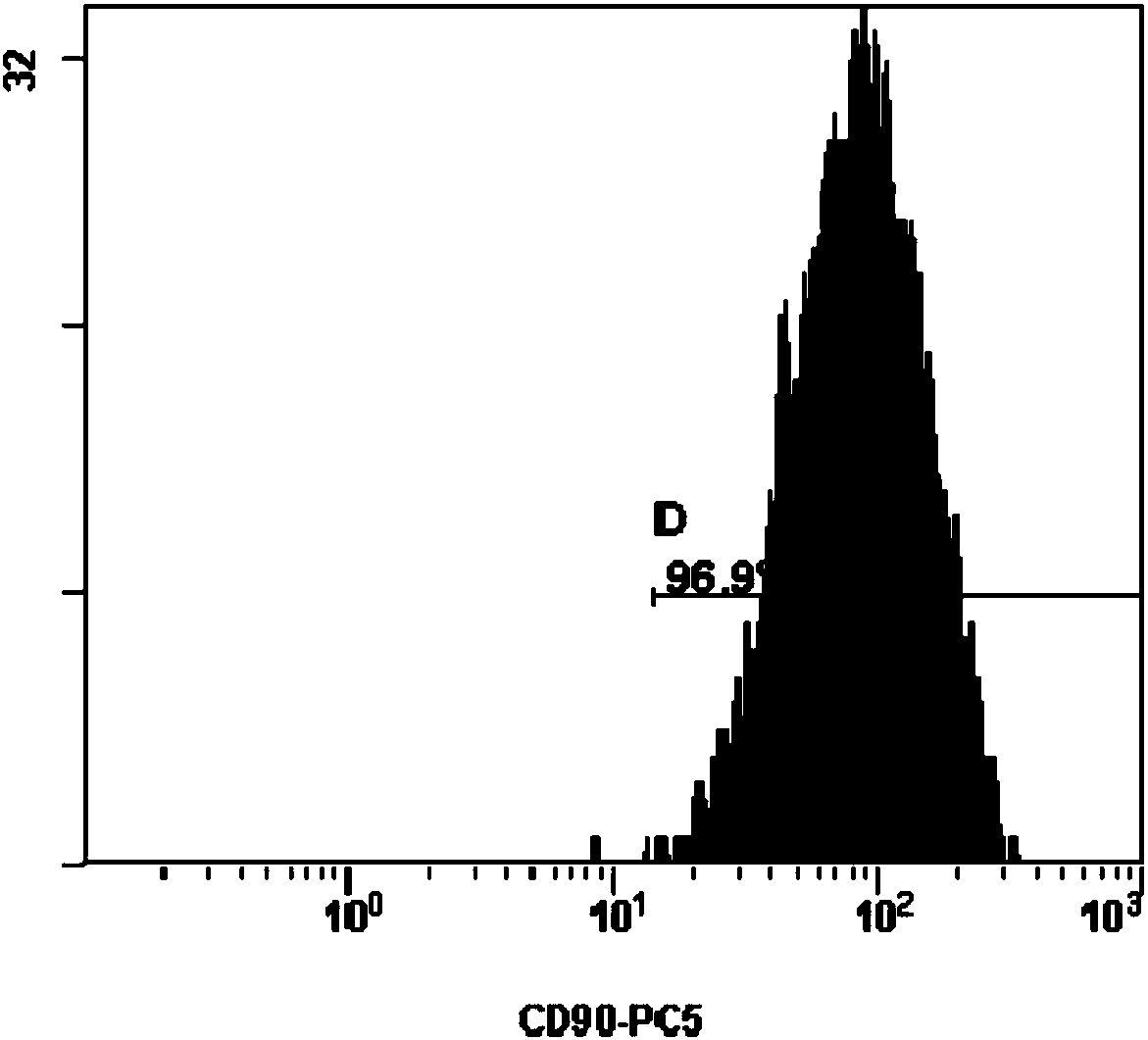Method for extracting subtotipotent stem cells from placental fetal face chorion
A technology of chorion and stem cells, applied in the field of stem cells, can solve the problems of poor understanding of stem cells
- Summary
- Abstract
- Description
- Claims
- Application Information
AI Technical Summary
Problems solved by technology
Method used
Image
Examples
Embodiment 1
[0086] Example 1. Subpotent stem cells were extracted from placental fetal face chorion, and detected and amplified
[0087] (1) Take out the human placenta from the collection box and place it in a white porcelain plate, after removing the amniotic membrane and blood stasis, rinse the surface of the placenta repeatedly with physiological saline (sterile, the same below) for disinfection;
[0088] (2) Transfer to a new white porcelain plate, cut the fetal chorion and put it in a 100mm glass dish, try to remove the remaining placental lobular tissue on the surface, and cut it to 0.5-1.5mm 3 Left and right (1mm in this example 3 left and right) small pieces;
[0089] (3) Using a 300-mesh sieve, rinse the small tissue pieces with a large amount of normal saline to remove residual blood cells;
[0090] (4) Tissue digestion: Use 1 to 2 times (1.5 times in this case) tissue volume of mixed enzymes (0.1mg / ml type I collagenase, 0.1mg / ml type II collagenase, 0.1mg / ml hyaluronic ac...
Embodiment 2
[0098] Example 2. Subpotent stem cells were extracted from the placental fetal face chorion, and detected and amplified
[0099] (1) Take out the human placenta from the collection box and place it in a white porcelain plate, after removing the amniotic membrane and blood stasis, rinse the surface of the placenta repeatedly with physiological saline (sterile, the same below) for disinfection;
[0100] (2) Transfer to a new white porcelain plate, cut the fetal chorion and put it in a 100mm glass dish, try to remove the remaining placental lobular tissue on the surface, and cut it to 0.5mm 3 left and right small pieces;
[0101] (3) Using a 300-mesh sieve, rinse the small tissue pieces with a large amount of normal saline to remove residual blood cells;
[0102] (4) Tissue digestion: Use a mixed enzyme (0.1 mg / ml type I collagenase, 0.1 mg / ml type II collagenase, 0.1 mg / ml hyaluronidase and 0.05 mg / ml neutral enzyme) of 1 tissue volume Protease, which also added 0.01mol / L ci...
Embodiment 3
[0109] Example 3. Subpotent stem cells were extracted from placental fetal face chorion, and detected and amplified
[0110] (1) Take out the human placenta from the collection box and place it in a white porcelain plate, after removing the amniotic membrane and blood stasis, rinse the surface of the placenta repeatedly with physiological saline (sterile, the same below) for disinfection;
[0111] (2) Transfer to a new white porcelain plate, cut the fetal chorion and put it in a 100mm glass dish, try to remove the residual placental lobular tissue on the surface, and cut it to 1.5mm 3 left and right small pieces;
[0112] (3) Using a 300-mesh sieve, rinse the small tissue pieces with a large amount of normal saline to remove residual blood cells;
[0113] (4) Tissue digestion: use 2 times the tissue volume of mixed enzymes (0.1mg / ml type I collagenase, 0.1mg / ml type II collagenase, 0.1mg / ml hyaluronidase and 0.05mg / ml neutral Protease, which also added 0.03mol / L citric aci...
PUM
 Login to View More
Login to View More Abstract
Description
Claims
Application Information
 Login to View More
Login to View More - R&D
- Intellectual Property
- Life Sciences
- Materials
- Tech Scout
- Unparalleled Data Quality
- Higher Quality Content
- 60% Fewer Hallucinations
Browse by: Latest US Patents, China's latest patents, Technical Efficacy Thesaurus, Application Domain, Technology Topic, Popular Technical Reports.
© 2025 PatSnap. All rights reserved.Legal|Privacy policy|Modern Slavery Act Transparency Statement|Sitemap|About US| Contact US: help@patsnap.com



